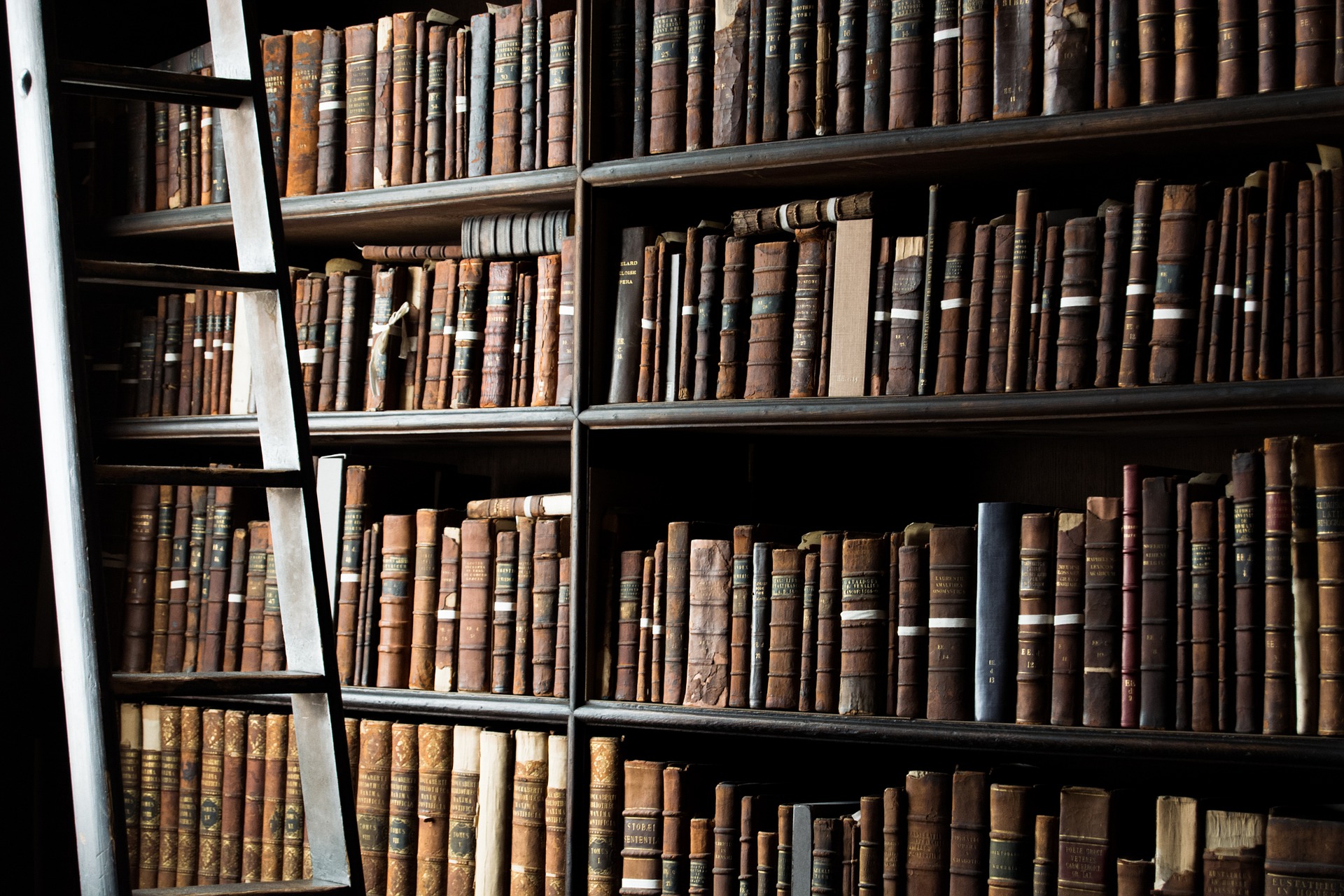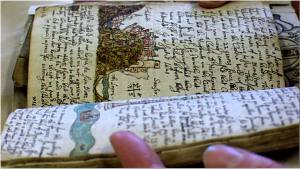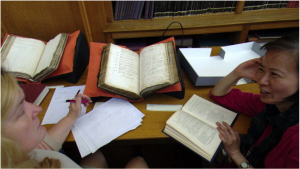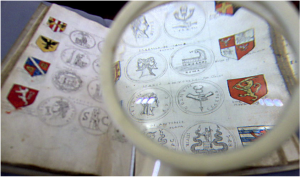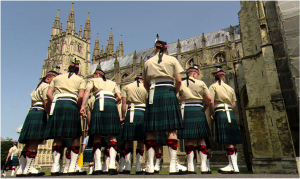This postgraduate training day was part of the AHRC-funded ‘Going Digital’ training programme for CHASE scholars – the Consortium for Humanities and the Arts South East England [http://www.uea.ac.uk/hum/gradschool/news/consortium-launch] – of which Kent is a member. We spent a fascinating day ‘Opening Up the Archives’ at Canterbury Cathedral – in the morning we discussed the day’s key issues in the abstract, bringing together our different areas of knowledge about ‘local’ communities of users and the kinds of responses we wanted them to have to the material we digitized. We asked who we wanted communities of users to be – communities who are users, or users who become communities through their use of online materials? And what makes a local community of users for a digital product – what is the nature of ‘the local’ on the internet? We discussed who non-academic archive users are, who they might become when the next wave of digitization has taken place, and why they might want to look at digital archives.
After learning about Canterbury Cathedral Archive from its chief archivist, we discussed the DocExplore project which is a collaboration between the University of Kent’s Centre for Medieval and Early Modern Studies and School of Engineering and Digital Arts, the Cathedral Archive and the University and Library of Rouen [http://www.docexplore.eu/]. It is an EU INTERREG IVa project that investigates computer-based access to and analysis of historical manuscripts. Above is the Canterbury manuscript on which we have been working – the seventeenth-century travel diaries of John Bargrave. We talked about the desire we had shared on this project, not only to widen access to and awareness of local archives, but also to extend engagement with them.
As we tried out the latest version of the software, we explored the way software design can define users and types of use of historical documents, and how a dialogue might be opened up between the work of academic and non-academic users. We also discussed my particular research interest – the material culture of digital humanities – asking how digitization might reflect not just the content of documents, but those documents as interactions between people and objects, with their marks of wear and tear, their size and shape, what they’re written on and the way they are written – with erasures and interlineations for instance. Later on we looked at the tiny original document, and discussed what had been gained and what had been lost in the process of digitization.
After a demonstration of the DocExplore system and lunch in the gardens overlooking the Cathedral, we went into the cloisters where the Archives are housed. There, the students divided into groups to consider which communities of users a particular document or set of documents might appeal to, and how they would present them to those communities. The documents included a sixteenth-century diary, a set of court cases about will disputes and slanders, some town accounts and the remarkable commonplace book above, full of images of everything from fabulous beasts to coats of arms. The ideas for presentation included animated maps through which documents about different areas could be accessed, a Horrible Histories-type approach to the courts and their cases, ways of provoking curiosity about early modern spending such as totalling up money spent in inns, bringing together material about life-cycle and annual events – marriage and Christmas, and creating links across the commonplace book so that readers could take a route from mythical creatures to heraldry, or from coins to geography. Some documents, like accounts, worked well to open up whole periods and connect to key historical themes, whereas others worked in the opposite direction, needing a great deal of contextualisation to give audiences a way into the mind-set that created them. There was general agreement about the need to present documents in their entirety, but to create ways into and around them too – spatialised, visualised, peopled environments in which conversations about the archives could begin.
Catherine Richardson, with thanks to Paolo Cardullo for the wonderful images [http://kiddingthecity.org/blog].
We shared the precincts with the 5th Battalion the Royal regiment of Scotland who were parading there precincts with their weapons before their leaving service!
